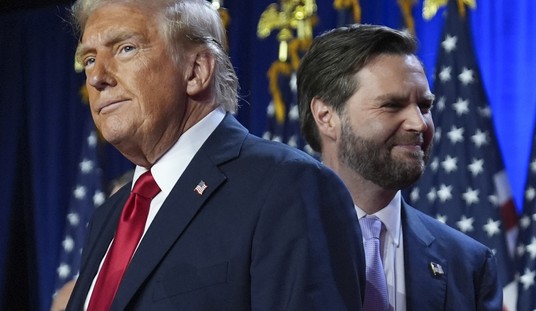When employment hit an air pocket in December, most analysts brushed off the dreadful jobs number as an anomaly, or a function of the weather. They chose to believe Ben Bernanke rather than their lying eyes. It’s hard to ignore a second signal that the U.S. economy is dead in the water, though: on Monday the Institute for Supply Management reported the steepest drop in manufacturing orders since December 1980:

In January, only 51% of manufacturers reported a rise in new orders, vs. 64% in December. Not only did the U.S. economy stop hiring in December, with just 74,000 workers added to payrolls; it stopped ordering new equipment. The drop in orders is something that only has occurred during recessions (denoted by the shaded blue portions of the chart). The Commerce Department earlier reported a sharp drop in December orders for durable goods. In current dollars, durable goods orders are unchanged from a year ago, which is to say they are lower after inflation.

This should be no surprise in retrospect, given two disastrous underlying trends. One is the decline of real median household income:

The other is the collapse of the labor force participation rate, which is the flip side of the coin: if fewer adults are working, median household income will be lower.

It’s even worse than it looks, because Americans who have jobs are working fewer hours.

Average hours worked are down 1% from pre-recession levels. That doesn’t seem like a lot, but it’s the equivalent of 1.4 million jobs in a labor force of 140 million. The U.S. has restored 2.5 million jobs since the financial crash, but adjusted for hours worked, it’s the equivalent of just 1.1 million jobs.
Business won’t invest in brick, mortar, equipment and labor. Part of this is due to the Obama adminstration’s regulatory reign of terror. Part of this is due to Obamacare, which adds to business costs. Part of this is due to secular trends–what Nobel laureate Edmund Phelps calls a “structural slump.” We no longer have high-tech companies: we have instead aging monopolies run by patent lawyers. Nondefense capital goods orders, adjusted for inflation, are running 20% below the 2000 peak and 10% below the level of 2007.
We’ve had a few deceptive signs of activity, to be sure. With the average age of U.S. cars on the road rising to 11.4 years as of last August, a very large number of vehicles must be replaced. Apart from student loans, the only category of consumer credit that expanded during 2013 was automobile loans. The replacement wave appears to be over and car sales have slumped.
Last year’s 30% runup in the S&P 500 was founded on the firm belief that things would get better in the future as they always had in the past. Can the stock market be so wrong? Twice in my lifetime, the stock market has given ridiculously wrong signals: during the tech bubble of the 1990s and the mortgage bubble of the 2000s. The Fed’s unprecedented provision of liquidity cheered the stock market, but it did not persuade lenders to lend or borrowers to borrow. The growth rate in total bank credit is close to zero, something we have seen before only in recession periods.

The Fed has insisted throughout that the treatment was working and the patient was getting better. Americans know better: in late January, 74% of respondents to a Fox News poll said the country still was in recession.
Republicans have a once-in-a-generation opportunity to roar back to power given the miserable performance of the economy on Obama’s watch. But they still could fall on their faces.
The problem is NOT government spending, contrary to the well-meaning obsession of the Tea Party. That will BECOME the problem a decade or two from now. The problem now is obstacles to investment: the highest corporate tax rate in the world, onerous regulation, the crazyquilt uncertainty of Obamacare. America needs aggressive tax cuts and regulatory rollback. It also needs to spend more on infrastructure, which is becoming a major obstacle to growth. It needs to spend more on R&D, particularly on cutting-edge military R&D. The way to do this, I’ve argued for years, is to emulate Roosevelt’s alphabet-soup federal agencies and put unemployed Americans to work repairing infrastructure at $20 an hour, rather than paying $50 an hour to the construction unions. That’s heresy from a free-marketeer like me, but it makes economic sense and will drive the Democrats crazy.
If Republicans stage more cliffhangers around the budget, they may yet snatch defeat out of the jaws of victory. They should talk about nothing but growth and jobs. Many Republican analysts claimed that Obama just got lucky in 2012, that the economy was turning up in any event and the incumbent got the credit. That is self-consoling nonsense: the Republicans lost because Mitt Romney came across like a silver-spoon princeling, and because Americans (with good reason) blamed the Republicans as much as the Democrats for the economic mess. They chose economic dependency over enterprise, because enterprise–in the form of the Internet and housing bubbles–hadn’t gotten them anywhere. We Republicans have a lot of explaining to do and we had better get down to it.
*****
image illustration courtesy shutterstock / ollyy











Join the conversation as a VIP Member